藝評
The Rise of the 'Emerging' Artist
約翰百德 (John BATTEN)
at 2:39pm on 19th October 2015
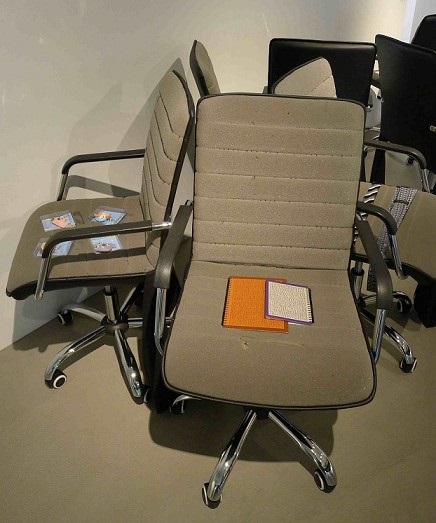
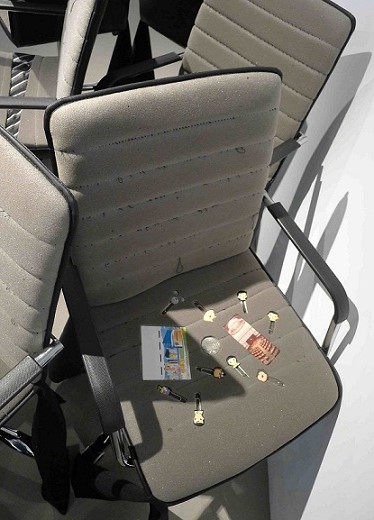
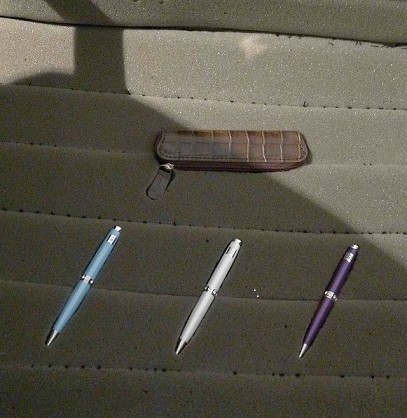
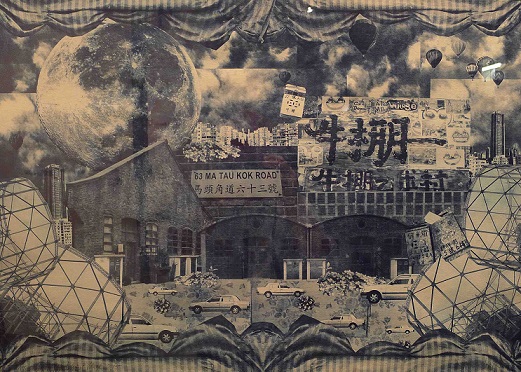
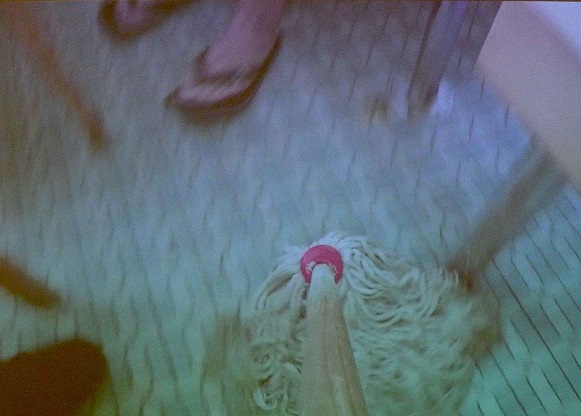
Captions:
1. - 3.Tang Kwok-hing, Cold Plank, office chairs, souvenirs from Legislative Council of the HKSAR, 2015.
4. Peggy Chan, Peggy Chan for Choi Ming Sum, cyanotype, 2015.
5. Eason Tsang Ka-wai, Mopping, video still, 2015.
All photographs: John Batten
(原文以英文發表,題為〈「新興」藝術家的崛起〉。)
One of those tired, over-used descriptions in the art world is “emerging,” as in “emerging artist” or “emerging curator.” I tend to use the more accurate “young,” as such labeled artists usually are young and, like anyone in their youth, full of possibilities. However, the art world’s “emerging” implies more than just age and potential. It acknowledges the subject artist as a target for promotion, “one to be watched.”
Similar to the music industry, the art world promotes its favourites - and often ignores actual talent. An emerging artist can enjoy success when the wheels of gallery promotion, popular interest and collector attraction coincide. Success is then generally measured by sales, but the art world is layered, so there are other circuits for ‘success.’ Curators or art writers and critics can take an interest in, or friendship with, a young artist and ‘talk’ about them, leading to possible exhibition opportunities. In the more rarified world of art academia and their attached museums and contemporary art spaces, socially and politically attuned younger artists are exhibited, emerging into the art world via a more cerebral route.
Often, the first showings of any artist are in exhibitions organized by artists themselves and in non-profit art spaces. This initially happens during their student days and will continue after graduation. Hong Kong fine art schools all offer exhibition opportunities; for example, the Hong Kong Arts Centre has an exclusive exhibition area for their Art School students on the tenth floor of their building. After graduation, commercial art galleries may offer opportunities.
Perversely, most art fairs and the world’s art biennales are the least liking places to see the work of young artists. These calendar events tend to be for “tried and tested” and “name” artists. You generally won’t find the “next big thing” here, the exhibiting artists have generally already arrived! This is a reflection of the uneasy commercial aspects of these large profiled events and their consequent higher cost structure - supported by artists outside the “emerging” category and their gallery’s promotion strategies.
The perfect place for young artists to exhibit and have potential to make an impact on primary tastemakers (read: other artists, art critics, gallery owners and curators) is in a considered, intelligently articulated group exhibition – where artists are pitted alongside their contemporaries and are challenged to explore their art within a curatorially directed sub-text of ideas.
Recently, two group exhibitions successfully showcased a new generation of young Hong Kong artists: Imagine there’s no country / Above us only our cities at Para Site, which explored Hong Kong identity within a changing political landscape; and the Affordable Art Basel, an exhibition organized by Hong Kong Urban Laboratory, originally conceived as a spoof art fair but evolved into a considered response to artwork displayed at Art Basel 2014.
Being “emerging” can be a problematic label for any artist. Ideally, promising young artists just need time, opportunities and support, not pressure to emerge, for their artwork to evolve. And, when does “emerging” no longer be applicable? Better known for his photography, Eason Tsang Ka Wai debuted at Para Site his – emerging (?) – video work with Mopping. This depicts him mopping a tiled cha chan teng floor (probably the Silver Café in Wah Fu Estate). This simple, slowly performed action, sweeping past the floor’s rubbish, people’s legs, piled boxes, around tables and chairs, depicts a Hong Kong truism: the city politically navigating itself around our sovereign mainland neighbour.
Peggy Chan has been on the periphery of Hong Kong’s mainstream art scene for the last five years and a few months ago she exhibited a beautiful series of cyanotype photographs at a commercial gallery. In the Affordable Art Basel exhibition, she assembled a large photographic collage of images of the Cattle Depot art spaces – a former abattoir – and the surrounding To Kwa Wan district. In this way she approached the topic of art collecting and introduced her work to potential collectors by giving, as she explains, “an ‘address’ (depicting) that it is an important place to me; it is where I was nurtured to be an “artist” and inspired me to use cyanotype as an artistic medium for my work.”
Tang Kwok Hin has explored his own New Territories’ family heritage and Hong Kong identity since graduation. His maturity is evolving and his latest installation of roughly stacked executive chairs stripped of their upholstery is deceptively subversive. Each chair’s foam padding has been reworked as appliance packaging. Expertly inserted into this ‘packaging’ are knick-knacks that can be bought from the Legislative Council’s souvenir shop: ties, clips and pens. It is highly satirical of Hong Kong’s administrative and political institutions – and reflects the public’s feeling about politicians around the world.
These are a few of the young artists whose artwork is slowly evolving. I look at the work of all young artists, whether labeled by an art promoter as “emerging” - or not. Being influenced to just look at only some young artists for their potential is misleading - all youth can surprise!
This article was originally published in The Peak magazine, October, 2015.
原文刊於The Peak,2015年10月。
